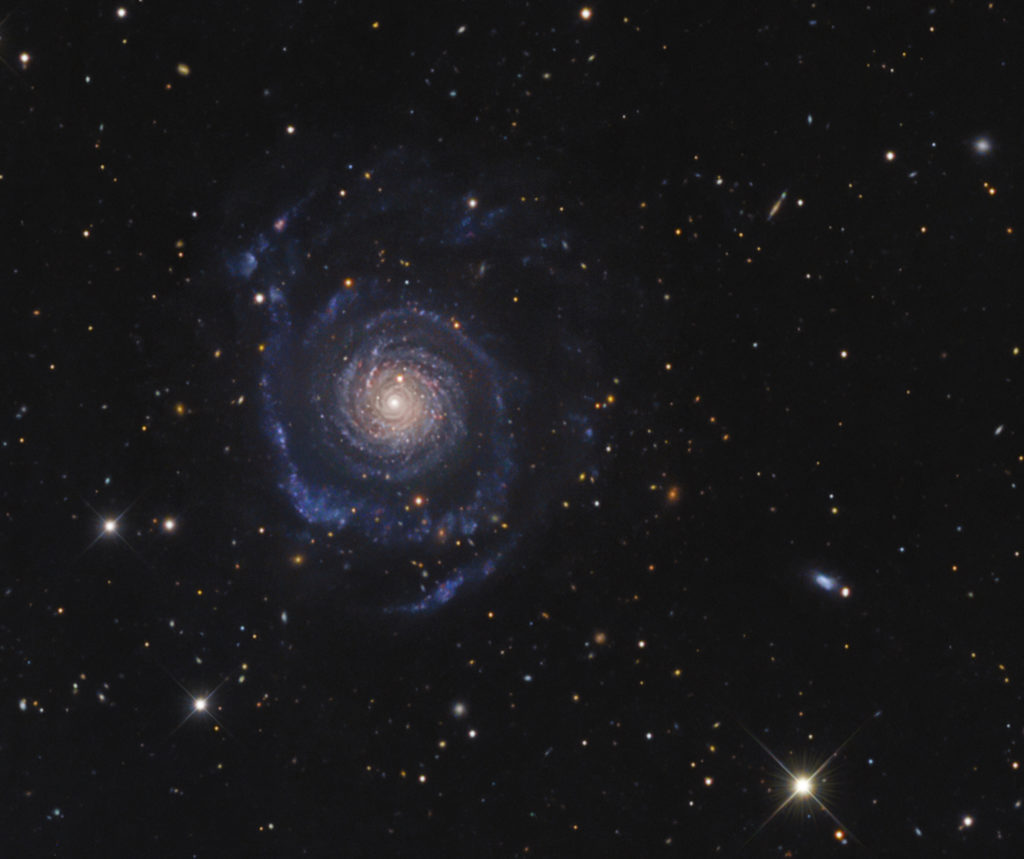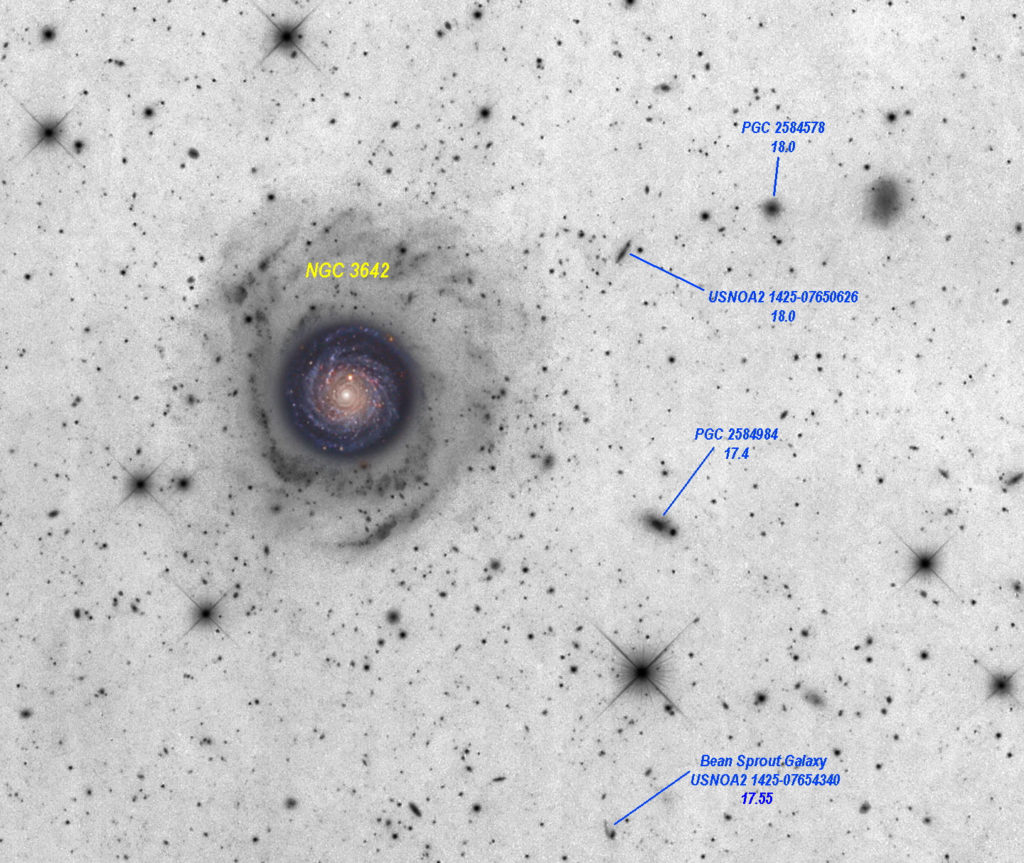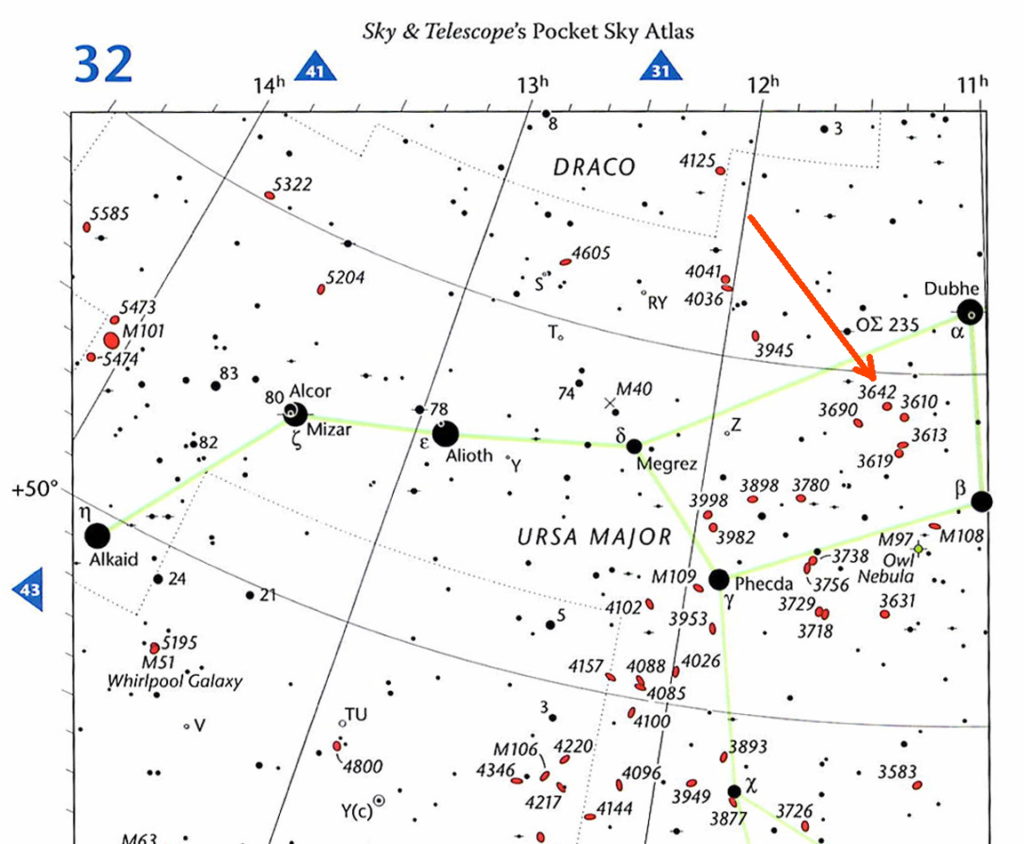


I first became aware of a very cool pathologic “brokeback” galaxy (NGC 3642) in bowl of the Big Dipper having watched Adam Block’s “Making Every Pixel Count – Powerful Processing in Photoshop” DVD some years ago. This small 5-arcmin face-on galaxy is apparently gravitationally interacting with a family of galaxies including NGC 3610 and NGC 3613. Adam used NGC 3642 to illustrate how to tame the background sky color and densities using object layer masks because the galaxy arms tail off faintly into the background. So preserving the color in these faint arms is a processing challenge. NGC 3642 also has exuberant star formation not only in the interior but also out in the warped outer arms. This may be due to gravitational effects from nearby galaxies or perhaps NGC 3642 has recently swallowed a low mass gas-rich dwarf galaxy (see link below). Another imaging/processing challenge was to preserve these star formation HII regions on the final image. My 18 hour NGC 3642 LRGB image (8 hrs. Lum 1×1; 10 hours RGB 2×2) is deep enough to show myriads of faint galaxies in the background some of which are labeled in the invert (attached). Most are anonymous. This is despite shooting directly into the teeth of the Chiefland light pollution dome to the north! Culprit galaxies NGC 3610 and 3613, which likely warped NGC 3642, are out of my image field. An attached inverted image shows a huge warped outer “pseudoring”! It would be fun to image NGC 3610 which is also pathologic (see Astrobin link below for wider image of both N3642 and 3610). A HST close-up image of the center part of NGC 3642 shows lots of new star formation but the colors are not RGB (link below). I went into the Hubble archive to attempt to find RGB data and process it but was unsuccessful. I guess the HII regions in the Hubble image are orange?? Adam’s NGC 3642 image does not show red HII color in the innards of NGC 3642 (link below). Are the reddish HII regions in my LRGB image real? It is almost impossible to find detailed LRGB images of this galaxy to study the vast star formation researchers claim is there. Perhaps I could ask Adam to image the brokeback galaxy with his massive 32-inch RCOS using L(Ha)R(Ha)GB. Or maybe I will use the 60-inch telescope at Mt. Wilson next year chasing HII regions in NGC 3642! I was last on there in 1971 (see link below)!
P.S. – Check out the “Bean Sprout Galaxy” at mag. 17.5 at the bottom of the inverted image! Arp would have loved this one! This is probably two unrelated galaxies. Please don’t tell Arp I said that!
P.S.2 – Adam Block has an updated tutorial on Photoshop $120 (link below).
http://www.caelumobservatory.com/gallery/n3642.shtml — Adam Block’s masterpiece with 24-inch RCOS – Mt. Lemmon
http://www.adamblockphotos.com/store/p7/Dimensions_of_Photoshop_by_Adam_Block.html — latest astro tutorial on Photoshop by Adam Block
http://www.aanda.org/articles/aa/pdf/2002/27/aah3551.pdf — great article on “Star Formation in the Warped Pseudoring of NGC3642”
https://upload.wikimedia.org/wikipedia/commons/6/6d/Ngc3642-hst-R658GB814.jpg – HST image of NGC 3642 innards
http://www.astrobin.com/85170/0/ — Astrobin wide image of NGC 3642 and NGC 3610 (do mouseover)
http://www.williamsseaandsky.com/?page_id=4461 — Using the cold camera on the Mt. Wilson 60-inch (1971)